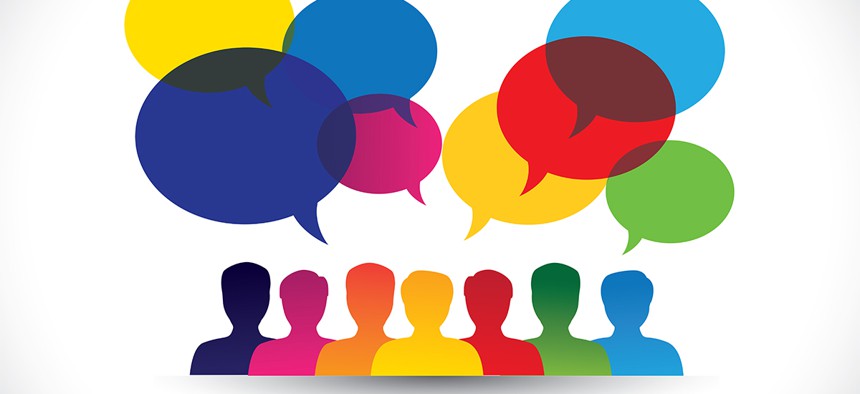When it Comes to Engagement With Citizens, the Government Is Finally Paying Attention

KreativKolors/Shutterstock.com
There is an old saying in retail marketing that “the customer is always right.” Unfortunately, it’s hard for the government to follow that adage.
Teresa A. Weipert is senior vice president at Sutherland Government Solutions.
There is an old saying in retail marketing that “the customer is always right.”
Unfortunately, over the past few decades it has been hard for the public sector to follow that adage. The acceleration of technological changes in how the private sector delivers goods and services has raised expectations among citizens that government agencies can do the same – or even find ways to do better.
In order to meet these expectations, it has become clear that government agencies must adapt to a cultural shift.
They must adopt a new citizen engagement strategy involving technology, policy, programs, best practices, intra/interagency collaboration, customer-friendly interactions and mechanisms for feedback on service delivery.
When it comes to improving customer experience, the federal government is finally paying attention.
For instance, there is a provision included in the fiscal 2016 spending bill directing the Office of Management and Budget to report on agencies’ progress in developing customer service standards and incorporating them into performance plans.
This new provision states more needs to be done to improve the services the government provides, whether it is citizens trying to use HealthCare.gov, taxpayers calling the IRS with questions or the Office of Personnel Management processing federal employment claims.
Even before this congressional nudge, federal agencies were taking steps to address citizen customer service.
OMB is developing a customer service playbook that should be made public this year. The playbook could help create general standards to be applied across agencies, allowing for better and more universal interpretation of performance data in digital government.
In addition, the General Services Administration has created 18F, an in-house “civic consultancy,” whose mission is to improve the public’s experience with government through technological innovation for a digital government.
The White House created the U.S. Digital Service “to improve and simplify the digital experience that people and businesses have with their government.” These efforts include utilizing state-of-the art contact centers, applying data analytics, software automation, and leveraging social media (e.g., Twitter, LinkedIn, and Facebook).
The good news is that much of the innovation and expertise for “elite customer service” and streamlined digital government already exists in the private sector, which has created the standards and technologies that can be adopted by government.
After all, customer service for the private sector is all about market share (capturing and retaining) and delivering outcomes that drive profits (stock price, revenue). Excellent customer service and experience is a requirement and the businesses servicing the companies with these skills have the knowledge to communicate with state-of-the-art technology and demonstrate they are doing a good job.
It is possible to create a customer service environment for agencies that allows things like “push to chat,” starting an avatar exchange for FAQs (frequently asked questions) and other tools to answer citizens’ questions.
These call-avoidance techniques do two important things: They allow us as citizen consumers to answer our own questions without having to call, and they reduce the cost of customer service centers.
Then there are the transactions – how to register, enroll, update – all important steps in our interactions with government agencies, and steps that rely on data to complete.
But this speaks to the cultural changes needed in government: If agencies are to focus on the “new” customer service, all employees must be engaged and committed, because it is a reflection on the department or agency.
NEXT STORY: Developers: 6 Steps to Revamp Your Apps






 By
By